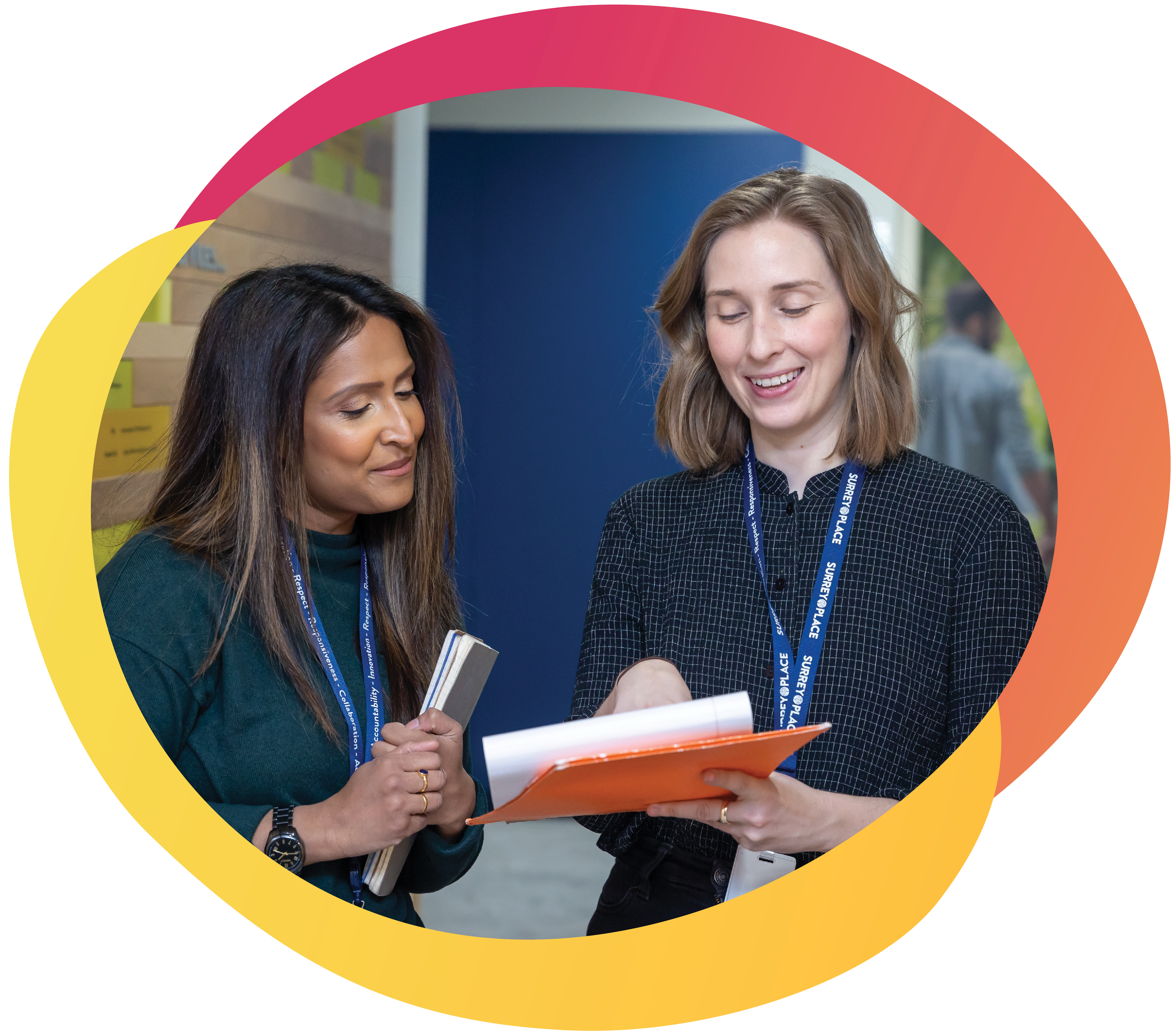Investing in Our Team
2021/22 in Review

Equity, Diversity, Inclusion & Accessibility (EDIA)
EDIA Updates
After embarking on an EDIA journey in the previous fiscal year, Surrey Place reviewed the assessment recommendations presented by external consultants, Barnes Management Group, and launched a working group in March 2022. The working group consists of Surrey Place staff members with diverse backgrounds from varying programs across the organization. Since establishing the working group, members have met bi-weekly and have begun to review new policies, connect with external EDIA leaders for training opportunities, determine goals and create an EDIA framework for the organization. The working group will continue collaborating with the leadership team and different departments to identify gaps in services, policies and strategies using an EDIA focus.
Anti-Racism: Black Cultural Awareness and Consulting Group
This fiscal year, the Anti-Racism: Black Cultural Awareness Consulting and Training Group developed terms of reference, establishing itself as a Surrey Place consultation group. Throughout the year, the group also applied for various grants to support the community engagement and education objectives outlined in the terms of reference. In partnership with the Equity, Diversity, Inclusion and Accessibility (EDIA) and Innovation department, the group successfully obtained the Anti-Racism Anti-Hate grant from the Ministry of Citizenship and Multiculturalism.
Group members also supported broader initiatives at the organization, including the Marketing and Communications department efforts to celebrate Black History Month and Remembrance Day using an EDIA lens. Members also supported the EDIA working group to ensure Black voices within the organization and community are represented.
Talent Management
Last fiscal year, Surrey Place created a Talent Management and Succession Planning policy as part of one of our Strategic Directions. The People Services department has collaborated with directors, vice-presidents, and our CEO in monthly sessions this fiscal year to support this policy. The group has identified six core competencies that all directors and vice-presidents must possess to be considered for or maintain their positions. Based on the Developmental Sector’s core competencies dictionary, we have distinguished which additional competencies are required for each unique role. And lastly, updated job descriptions to reflect role duties, responsibilities, deliverables, and core competencies to asses’ potential successors in the 2022/2023 fiscal year.
Mentorship Program
In January 2022, Surrey Place introduced its first-ever formal mentorship program. This pilot program resulted from an employee survey and recommendations by the Employee Task Force, who identified this as a way to develop staff.
Over the course of six-months, staff from across the organization applied and were selected to participate in the program, facilitated by our People Services department. The mentorship program included: a goal-setting workshop, a leadership skills workshop, monthly skill-building sessions with networking opportunities, weekly email support and mentor/mentee discussion topic suggestions, recommendations around job shadowing, participating in stretch assignments, giving, and receiving feedback, and coaching for excellence. At the end of the program, we surveyed participants and found that 100% of mentees and 86% of mentors who completed the survey reported they felt they had met the objectives of the program.
Employee Engagement
Employee Wellness
As many Surrey Place staff continued to work remotely in 2021 and early 2022, we held several mental health and well-being activities hosted by our staff. This initiative was part of People Services’ priority to support employees’ mental health and well-being during the pandemic. Some activities included a book club, coffee chat, office chair stretches, yoga, and more.
ParticipACTION
In the last fiscal year, 209 members across 51 teams from Surrey Place participated in five ParticipACTION challenges, where staff could log their daily activity for a chance to win prizes and be more active throughout their day. ParticipACTION is a national non-profit organization that uses evidence-based behavioural insights to empower employees to participate in a more active workday.
Not Myself Today
Not Myself Today is a Canadian Mental Health Association initiative, created to build knowledge and understanding, and start conversations about mental health in the workplace. Throughout the year, 26 Not Myself Today ambassadors, led their departments through materials, activities, and resources to break down barriers and make mental health engaging and accessible to all employees. Resources included health quizzes, webinars on topics such as Having Difficult Conversations and Understanding Stress, kindness cards templates, guided meditations, and Working with Emotions – a guide to training your brain to master your mood.
Processes & Systems
Organizational Redesign
Our organizational redesign project, which was initiated in 2020/2021, continued into the last fiscal year. The purpose of the redesignis to create an agile and sustainable work environment for staff that is flexible and adaptable. This project will also position Surrey Place to better support families and clients and improve communication by breaking down silos and creating professional and career development pathways for staff.
As of the end of the last fiscal year, we have completed four phases of the organizational redesign and are currently at the fifth phase: Evaluation and Quality Assurance.